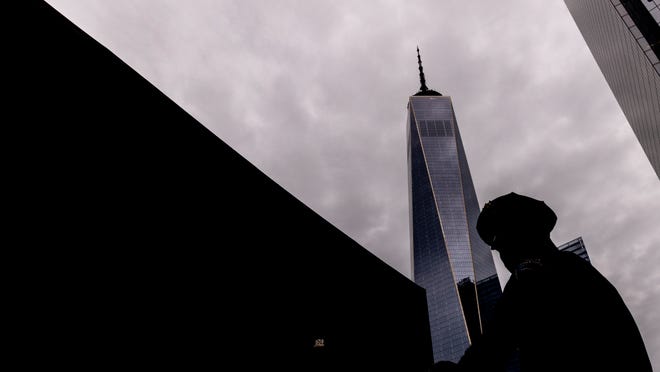On Feb. 26, 1993, a van loaded with a 1,200-pound urea nitrate bomb rocked the World Trade Center and became the first event that signaled the arrival of international terrorism on American soil.
“This event was the first indication for the Diplomatic Security Service (DSS) that terrorism was evolving from a regional phenomenon outside of the United States to a transnational phenomenon,” the State Department said.
At 12:18 p.m. on a cold winter day, the group of terrorists parked on the B-2 level of the garage beneath the World Trade Center, lit the bomb’s fuse, and escaped in a getaway car — carving a hole 150 feet wide and several stories deep underneath the North Tower, killing six people and injuring thousands more. The people who could escape were covered in soot as smoke and flames filled the building and the attackers slipped away from the scene unnoticed, the FBI said.
“The mission was to destroy the Twin Towers,” according to the 9/11 Memorial and Museum. “People on the top floors of the towers and in surrounding buildings could feel the force of the explosion.”




The Federal Bureau of Investigations said that agents “were tantalizingly close to encountering the planners of this attack” while tracking “Islamic fundamentalists” in the city months prior to the bombing.
A massive investigation and two-year man hunt for the suspected attackers was led by New York City’s Joint Terrorism Task Force and around 700 FBI agents worldwide. The vehicle, a Ryder van, was traced to a rental agency in New Jersey, which led investigators to Mohammed Salameh, who had reported it stolen on the afternoon of February 26.
Salameh was arrested on March 4, 1993, shortly before the arrest of three more co-conspirators: Ahmad Ajaj, Nidal Ayyad, and Mahmoud Abouhalima. Two of the bombers, Ramzi Yousef and Eyad Ismoil, fled the country the night of the attack using fake passports.
More than 200 witnesses were called to testify during the trial, which began on April 21, 1993, in the U.S. District Court for the Southern District of New York.
On May 24, 1994, each were sentenced to 240 years in prison.
By July 1993, law enforcement officials believed that Yousef had escaped to Pakistan, but still offered a $2 million reward for information that would lead to his arrest.

Were the bombers at-large apprehended?
An alleged former contact of Yousef went to the residence of a U.S. diplomat in Pakistan to inform them of his location.
On Feb. 7, 1995, Yousef was captured by a team of Pakistani law enforcement officers and DSS agents who raided a hotel room in Pakistan, and the informant received the reward.
Yousef was tried and convicted, along with Ismoil, for the bombing.
Additionally, Yousef was indicated for a conspiracy codenamed Bojinka to simultaneously blow up 12 U.S. commercial airliners while airborne. One portion of that plot involved crashing an airplane into CIA Headquarters in Virginia, according to a 2002 Congressional intelligence report on events leading up to Sept. 11, 2001.

A seventh plotter, Abdul Yasin, remains at large for his alleged participation after fleeing the United States for Iraq. The FBI interviewed Yasin in 1993 but released him due to a lack of evidence.
Five of the six convicted World Trade Center bombers are still serving their sentences at a maximum-security prison in Colorado, while the sixth, Nidal Ayyad, serves in Indiana, according to the 9/11 Museum.
Camille Fine is a trending visual producer on USA TODAY’s NOW team.
What’s everyone talking about?Sign up for our trending newsletter to get the latest news of the day


